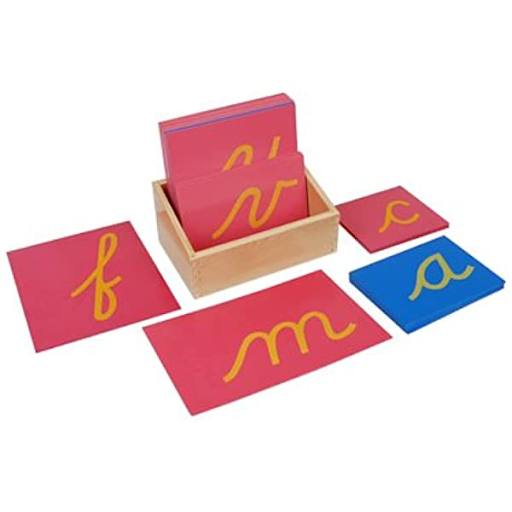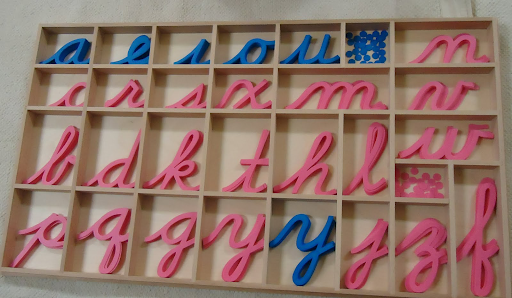Many of us who grew up attending traditional schools learned to read before we learned to write. We were taught the names of letters before learning the sound made by each letter. However, the Montessori sequence of lessons gives children opportunities to write before they even begin to read.
The intellectual process of writing in the primary classroom begins with spoken language activities like storytelling, poems, songs, and sound games. These activities give children the vocabulary and ideas they need to express themselves through writing. Children are also directly prepared with the Sandpaper Letters. The Sandpaper Letters allow the child to use tactile, auditory, and visual modalities to identify the graphic symbols that represent sounds.
To understand writing in the Montessori environment, it is important to understand the process of reading and writing in general. When an individual reads, they are reading someone else’s thoughts rather than their own. They are also identifying symbols and attaching sounds in a short period of time. Therefore, reading involves decoding, fusing sounds and attaching meaning all while being under a time constraint. Writing, on the other hand, starts with a thought already known by the child and then involves identifying a sound, attaching a symbol, and transcribing. Dr. Montessori designed a material called the Moveable Alphabet that removes the challenge of transcribing, making early writing a much simpler process. All the child has to do is identify the sounds and corresponding symbols of a word. This material is unique to the Montessori Method and the key piece to early writing.
As the child works to identify individual sounds in words to write, they are also learning the code to reading. The child in a Montessori environment is given repeated and frequent opportunities to make their own words first. This eventually results in what Dr. Montessori described as a spontaneous explosion into reading. Once a child understands how to decode phonetic words, they begin to study and incorporate phonograms, sight words, alternative spellings, parts of speech, sentence structure, and the importance of word order. All of this work supports the child to reach total reading. Total reading is not only the mechanical ability to decipher letters and words, but also the intellectual ability to understand what we read, allowing us to create mental images of what is being described.
At around the same time a child is learning the intellectual process of writing, they are developing the mechanical skills needed for the art of handwriting. These handwriting lessons come after years of indirect preparation of the hand and support the child to eventually transcribe their thoughts without the Movable Alphabet. Children also learn to write in cursive because it lends itself to the natural movement of the hand and leads to fewer reversals of letters. When the child begins to read, they will read text in print and begin to differentiate the two styles.
The thoughtful progression of language presentations in a Montessori environment supports children to joyfully and effortlessly acquire the skills needed to write and read. Adults must provide a rich language environment but also recognize that every child will begin the process in their own time.

